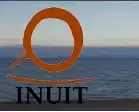White Paper: Petition to the Inter American Commission of Human Rights - Will Steger Foundation
Summary
White Paper: Petition to the Inter American Commission of Human Rights - Will Steger Foundation (Acrobat (PDF) 1.9MB Jun4 15)
SUMMARY
175 pages
This is a petition from the Inuit people requesting relief and reparations for irreversible damages to the Arctic lands on which they live.
This is an ethnographically oriented study of how arctic environments are degrading due to global warming. Though the materials elucidate the specific problems occurring in the Arctic, the main focus of the material is to show how environmental degradation of a region affects a people. In particular, a people who live intimately with the immediate environment, relying on local wildlife and fauna to provide food for families, relying on weather patterns to enable unencumbered movement across terrain.
GOALS
The materials make a strong connection between degradation of the environment and cultural melt down by digging deep into the personal experiences of tribal members with respect to changes in climate that affect wind speeds, sea level, health and quantity of local game and several other indicators of the consequences the natives pay for global warming. No particular skills are needed to understand this material, since it focuses on the social effects of global warming in the arctic region, and not on the mechanics of the physical mechanisms in play. The overall intent of the material is to force the student to focus on how environmental impacts affect socio-economic structures.
ACTIVITY DESCRIPTION AND TEACHING MATERIALS
For the last four thousand years Inuit have been living in the extreme conditions of the High Arctic. The first people came to Ellesmere Island to hunt muskox, caribou and sea mammals. They used sledges for winter transportation and kayaks in the summer and lived in small nomadic groups.
The Inuit way of life changed when the Arctic climate went through a natural period of warming between the years 1000 and 1200 A.D. Attracted by the warmer climate, greater numbers of whales migrated further north into the Arctic Ocean. Whale-hunting people spread from northern Alaska across the Arctic. Hunting and butchering large whales required the work and cooperation of many people, but the labor was rewarded by a more secure source of food and resources and a strong community culture.
The warmer weather also attracted Norse Vikings who settled in Greenland. The Vikings traded and fought with the Inuit. The warmer climate did not last, however, and from around 1450 until the end of the 18th century a natural cycle of cooling forced the whales further south and contributed to the disappearance of the Viking settlements in Greenland. The Inuit also had to adapt to the colder climate. They moved south from Ellesmere Island to Baffin Island and Northwest Greenland, eventually becoming two separate cultures, the Inuit of Baffin and the Inughuit of Northwest Greenland.
Today Inuit and Inughuit continue to live close to the land, getting a large portion of their diet from hunting, fishing and gathering. Changes in the climate can impact their ability to successfully hunt or travel from community to community.
Questions:
- How did the climate of your home region influence the way of life of the historical inhabitants?
- How does the climate influence the way you live?
- If the climate were to change in your home, what types of adaptations would you have to make?
Download >> Petition to the Inter American Commission of Human Rights >> FINALPetitionICC.pdf
PETITION TO THE INTER AMERICAN COMMISSION ON HUMAN RIGHTS
SEEKING RELIEF FROM VIOLATIONS RESULTING FROM GLOBAL
WARMING CAUSED BY ACTS AND OMISSIONS OF THE UNITED STATES
SUBMITTED BY SHEILA WATT-CLOUTIER,
WITH THE SUPPORT OF THE INUIT CIRCUMPOLAR CONFERENCE,
ON BEHALF OF ALL INUIT OF THE ARCTIC REGIONS OF THE UNITED STATES AND CANADA,
INCLUDING:
Pitseolak Alainga, Iqaluit, Nunavut
Heather Angnatok, Nain, Newfoundland and Labrador
Evie Anilniliak, Pangnirtung, Nunavut
Louis Autut, Chesterfield Inlet, Nunavut
Christine Baikie, Nain, Newfoundland and Labrador
Eugene Brower, Barrow, Alaska
Ronald Brower, Barrow, Alaska
Johnnie Cookie, Umiujaq, Quebec
Sappa Fleming, Kuujjuarapik, Québec
Lizzie Gordon, Kuujjuaq, Québec
Sandy Gordon, Kuujjuaq, Québec
David Haogak, Sachs Harbour, Northwest Territories
Edith Haogak, Sachs Harbour, Northwest Territories
Julius Ikkusek, Nain, Newfoundland and Labrador
Lucas Ittulak, Nain, Newfoundland and Labrador
Sarah Ittulak, Nain, Newfoundland and Labrador
Willie Jooktoo, Kuujjuarapik, Québec
Mina Jooktoo, Kuujjuarapik, Québec
Irving Kava, Savoonga, Alaska
John Keogak, Sachs Harbour, Northwest Territories
David Koneak, Kuujjuaq, Québec
George Koneak, Kuujjuaq, Quebec
Ben Kovic, Iqaluit, Nunavut
Frank Kudlak, Sachs Harbour, Northwest Territories
Nora Kuzuguk, Shishmaref, Alaska
John Lucas, Sachs Harbour, Northwest Territories
Samantha Lucas, Sachs Harbour, Northwest Territories
Pauloosie Lucassie, Iqaluit, Nunavut
Trevor Lucas, Sachs Harbour, Northwest Territories
Tony Manernaluk, Rankin Inlet, Nunavut
Jack Maniapik, Mayor, Pangnirtung, Nunavut
Rosemund Martin, Savoonga, Alaska
Warren Matumeak, Barrow, Alaska
Jamesie Mike, Pangnirtung, Nunavut
Meeka Mike, Iqaluit, Nunavut
Roy Nageak, Barrow, Alaska
Annie Napayok, Whale Cove, Nunavut
Enosilk Nashalik, Pangnirtung, Nunavut
Simon Nattaq, Iqaluit, Nunavut
Herbert Nayokpuk, Shishmaref, Alaska
George Noongwook, Savoonga, Alaska
Peter Paneak, Clyde River, Nunavut
Uqallak Panikpak, Clyde River, Nunavut
Joanasie Qappik, Pangnirtung, Nunavut
Apak Qaqqasiq, Clyde River, Nunavut
James Qillaq, Clyde River, Nunavut,
Paul Rookok, Savoonga, Alaska
Joshua Sala, Umiujaq, Québec
Akittiq Sanguya, Clyde River, Nunavut
John Sinnok, Shishmaref, Alaska
Jerome Tattuinee, Rankin Inlet, Nunavut
Stanley Tocktoo, Shishmaref, Alaska
Robbie Tookalak, Umiujaq, Québec
Kenneth Toovak, Barrow, Alaska
Alec Tuckatuck, Kuujjuarapik, Québec
Clara Tumic, Umiujaq, Québec
Isaac Tumic, Umiujaq, Québec
Sheila Watt-Cloutier, Iqaluit, Nunavut
Moses Weetaltuk, Kuujjuarapik, Québec
Stephen Weyiouanna, Shishmaref, Alaska
Geddes Wolki, Sachs Harbour, Northwest Territories
Lena Wolki, Sachs Harbour Northwest Territories
Jerry Wongitillin, Savoonga, Alaska
TEACHING NOTES / CONTEXT FOR USE
The materials should help reinforce connections between science, environment and socio-economic structures.
ASSESSMENT
Portfolio grading is suggested for these materials. The objective is to see the student build connections, rather than regurgitate data.


![[creative commons]](/images/creativecommons_16.png)